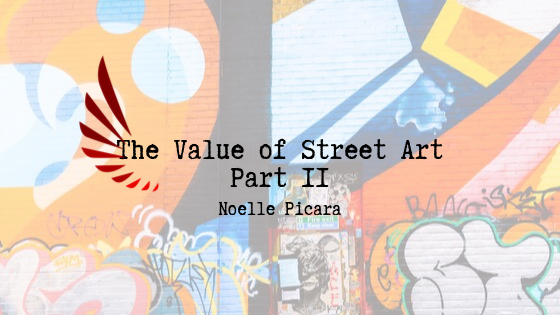A few months ago, I wrote a piece that discussed the importance of recognizing street art as a valid form of creativity. I delved into how the art studied in school typically focuses on Western European art forms, and how this can erroneously be seen as a superior, more complex art form. By bringing street art under the critical eye of analysis and rigorous study in the classroom, we are able to disrupt systemic oppression and white supremacy, shifting our society through educating children to value the expertise of artists who express a variety of culturally-specific experiences.
Although we could stop at U.S. street art, there is also a tremendous amount to be gained from studying street art that comes from outside cultures. In August, I took a two-week trip to Cuba, where I studied Cuban and Afro-Cuban percussion, piano, and dance. During this time, I had an opportunity to reflect upon what we could be doing better as educators to teach students the meaning of art in a cultural context.
Authentic Learning Through the Arts
In 2016, I changed my curriculum to use Circle Songs as a basis for teaching music, since it’s adaptable to multiple cultural frameworks. I have to be honest that when I first started shifting my vocal music classroom away from a Euro-centric focus, I often learned new music by watching YouTube videos, going to conferences, or reading books and scores online. However, after doing this intensive study in Cuba this summer, I realize the huge pitfalls of learning art forms that lie outside of your native culture in this way.
To start, learning in the native language is always preferable. In Cuba, I studied solely in Spanish, and I only studied with Cuban teachers, which allowed me to understand some of the more nuanced aspects of the culture that were represented in the art. Had I taken a course or watched a video in the U.S., I would have had a more limited understanding of the cultural impact. Think about everything that influences us each day — politics, religion, language, work, school, family, and more. Culturally, these things shape us and our understanding of the world. This is the basis for self-expression through art. As a foreigner, there is only so much I can understand without experiencing it through the lens of a local.
Ideally, teacher education programs and schools would be able to send teachers and students to other countries to study in the most authentic way possible, so that students can actually learn how the arts function to sustain legacy, wisdom, language, and human expression. If possible, this approach, combined with hiring teaching artists native to the arts being studied, would give students an authentic way to learn through the arts and shift their own views of the world through fundamentally understanding and practicing these art forms accurately. There is a power to putting yourself in someone else’s shoes, their rhythms, their voices, their bodies, looking at the world through their eyes and creating art with them.
Teaching the Arts from Culturally Neutral Lens
How we teach a subject is often as important as the subject itself, because students learn implicitly. Currently, schools tend to focus on Western European art forms. This means that we need to be careful not to look at other cultures’ art through this lens. This is the default, so if you are not actively working against this bias, then you are supporting it. It is impossible, as we learn from anthropology, to step out of your own cultural perspective.
Supremacy Beyond Borders
What’s amazing is that, when I was in Cuba, trying to grapple with an extremely complicated and rich study of Cuban music, some Cuban people were still trying to convince me to go to the conservatory and study Western European classical music. The fact that, even in Cuba, which has its own unique and world-renowned art forms that are culturally and historically specific, the university standard is still to teach Western European art, was extremely eye-opening for me. Let U.S. schools and Universities be the leaders in dismantling a Eurocentric framework of teaching the arts, and around the world, educators can do our part to shift to a future society that values all versions of the arts, and all people, equally.

